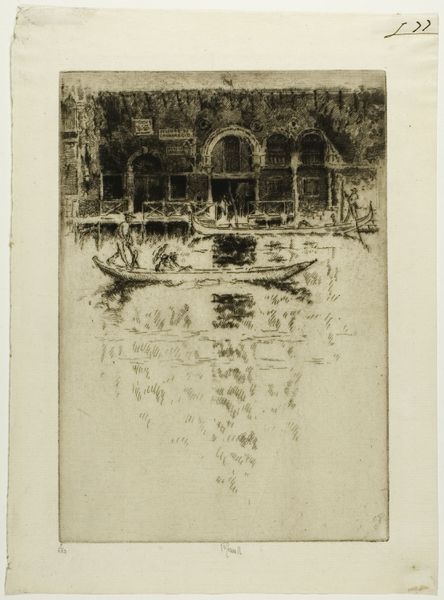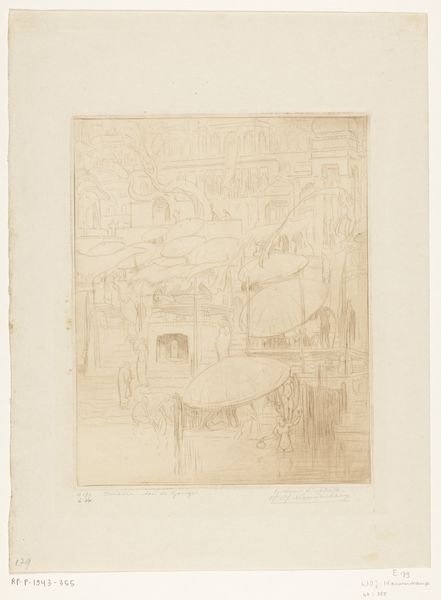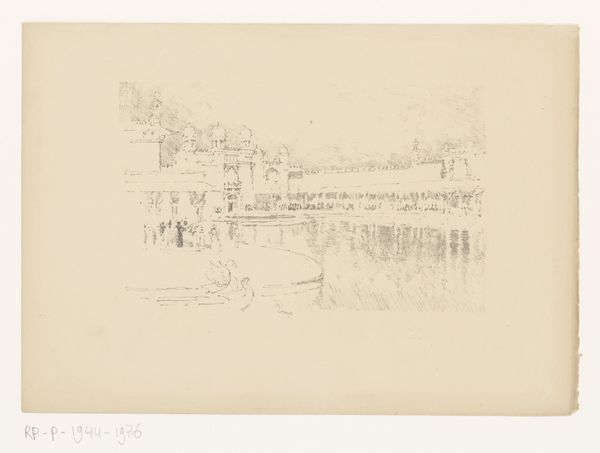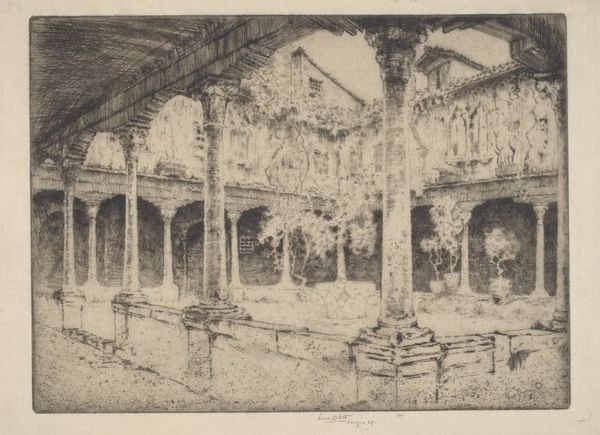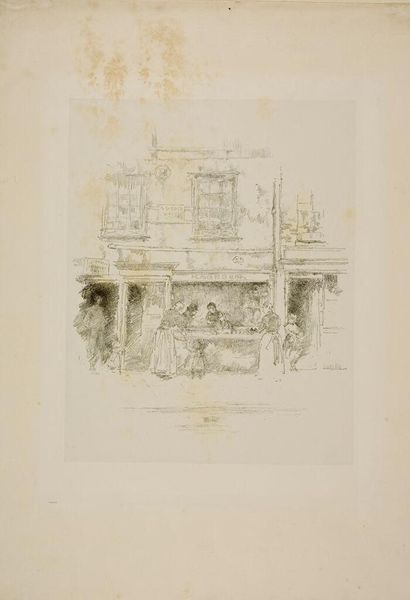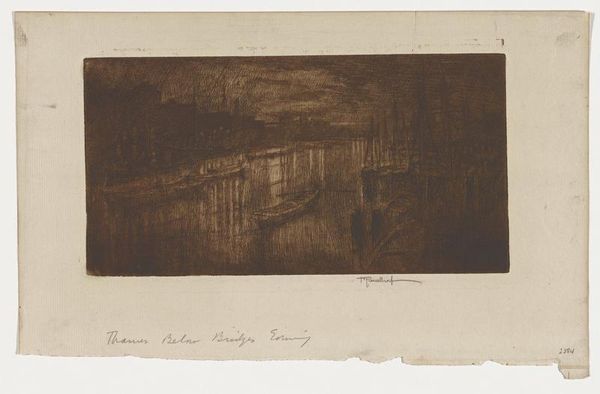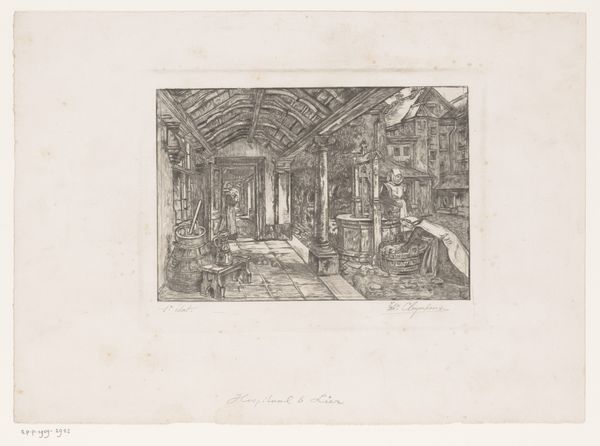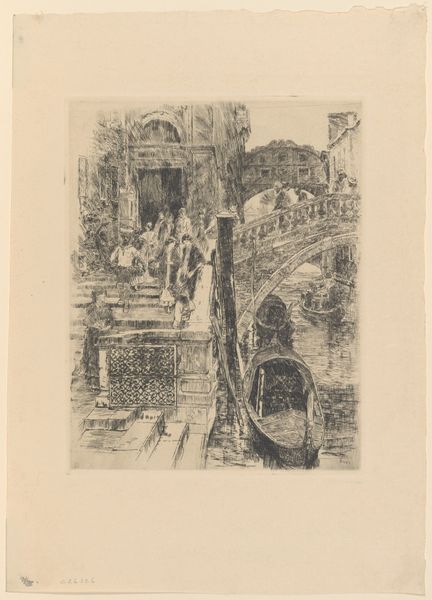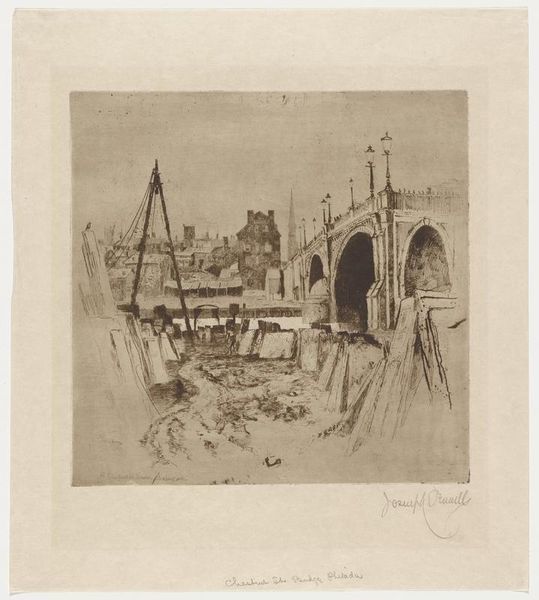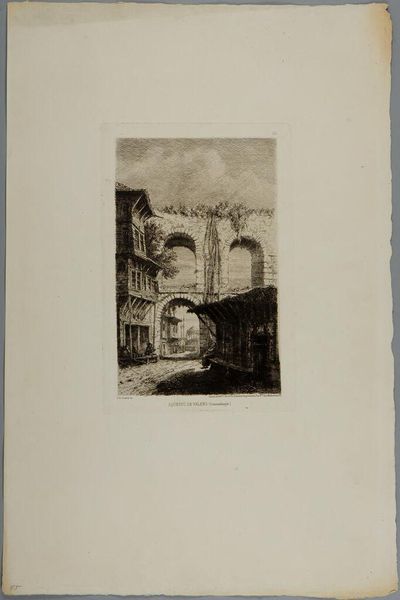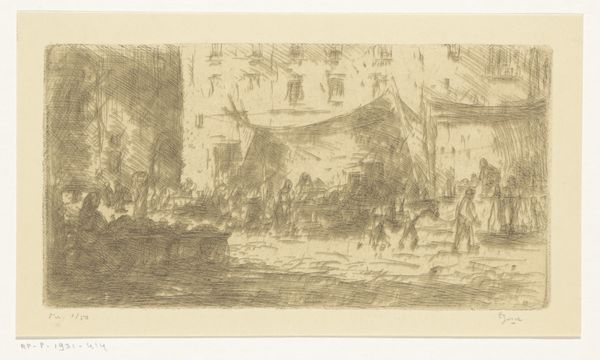
Dimensions: 5 3/4 x 3 7/8 in. (14.61 x 9.84 cm) (plate)8 3/4 x 5 3/4 in. (22.23 x 14.61 cm) (sheet)
Copyright: No Copyright - United States
Curator: "Cannon Street Station from the River," etched in 1905 by Joseph Pennell, captures a striking London cityscape. What stands out to you at first glance? Editor: The muted tones and the blurry feel lend it this really industrial melancholy. It makes me think about labour. The river itself seems to be almost a character. Curator: Absolutely. The Thames here, like the Seine for the Impressionists, reflects modernity's pulse, with an ever-present sense of transition. It would be interesting to see it in light of Walter Benjamin's exploration of modernity and the metropolis. Pennell, an American expatriate, chose London's industrial heart for his impressionistic compositions. Editor: Exactly, and the means through which Pennell has actually etched the work, and created his textures using the acid, are of significance to me. We're seeing labour represented in both the image and in its method. Consider, too, that at the turn of the last century there was also a booming market for mass-produced etchings which democratised access to art. Curator: Yes, that’s a crucial intersection. Pennell was keen to place his works in an increasingly class-divided society. And while many of the Impressionists embraced the new wealthy bourgeois flâneurs, Pennell always stayed true to his class interests. It asks us to consider not just *what* we are looking at, but also *for whom* this was intended. Editor: The station is almost monumental here. So much concrete and steel rendered through this intricate labour-intensive method. Its design certainly evokes a sense of great Victorian progress. It would have served a multitude of passengers every day, moving workers between spaces. And the whole thing reflected beautifully back in the water's surface. Curator: It makes you question the cost of that progress too, doesn’t it? There's this strange allure in viewing industrial infrastructure in fine art when these sites were producing pollution and inequity, a pertinent commentary on our own times as we look at issues such as the climate emergency and exploitation within manufacturing and factory labour forces. Editor: Definitely. It gives me pause to think about it on all of those levels, the layers are there once you pick at them. I think what remains is the beautiful execution itself though. Curator: Well, perhaps this makes us understand how artistic renditions of such subject matter always existed as inherently complicated expressions and observations of our world. Editor: And reminds us to keep asking important questions about the relationships between processes and meaning.
Comments
No comments
Be the first to comment and join the conversation on the ultimate creative platform.
